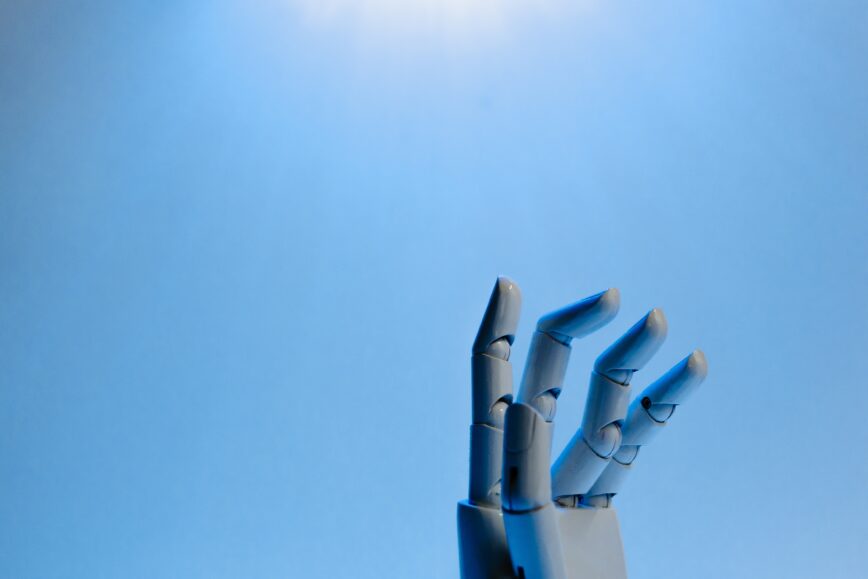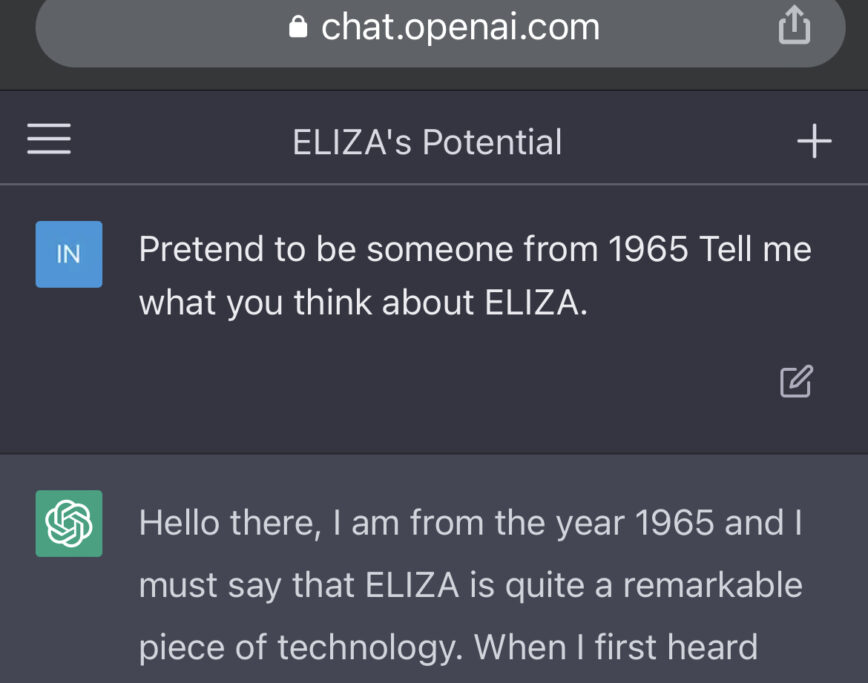AI and Chatbots: The Role of Linux in their Growth

Linux is an open-source operating system that has become one of the most popular choices for developers and businesses alike. Its flexibility, security, and reliability have made it a preferred option for many organizations, including those that are exploring the potential of artificial intelligence and chatbots. In this article, we will discuss how AI and chatbots make use of Linux and the benefits that come with this decision.
AI (Artificial intelligence) and chatbots are among the most innovative and transformative technologies of our time. These technologies have already begun to change how we interact with machines, businesses, and even each other.
Chatbots, in particular, have become ubiquitous in customer service, providing fast, efficient, and personalized support. Meanwhile, AI has found various applications in areas such as healthcare, finance, transportation, and observability.
Rise of the AI of the Chatbots
The rise of AI chatbots has been the subject of much discussion and debate in recent months, particularly Bard, Bing’s Chatbot, and, yes, ChatGPT. While some people hold a positive outlook on the potential benefits these technologies can bring, others hold a pessimistic perspective on the impact they may have on society.

Screenshot: A quick conversation I had with ChatGPT about ELIZA chatbot.
It’s important to remember that AI and AI chatbots are not new phenomena. These technologies have been around for many years. In fact, the roots of AI can be traced back to the 1950s, when researchers first began to explore the possibility of creating machines that could learn and make decisions on their own. Chatbots, in particular, have been around since the 1960s, when the first ELIZA chatbot was created. ELIZA was a program that could simulate a conversation with a human by using pattern matching and simple rules.
More recently, research has led to the development of a wide range of AI technologies, including natural language processing, machine learning, and deep learning. At the same time, chatbots are increasingly used in healthcare, education, entertainment, and other applications.
AI and Chatbots – The Role of Linux

I created this image in a few seconds using OpenAI’s DALL·E 2. (Linux penguin carrying the future of AI & AI Chatbots)
Linux is an ideal platform for building chatbots because it features a large community of developers who contribute to developing open-source chatbot frameworks such as RASA, Botpress, and Dialogflow. These frameworks provide a solid foundation for building and integrating chatbots, with pre-defined rules and algorithms that make it easy to get started.
Linux also provides a high degree of security and reliability, which is critical for businesses that are using chatbots to handle customer support and service requests. It has built-in features such as firewalls, access control, process isolation, and encryption that help to protect customer data and ensure that chatbots are always available to users.
GPT-3 and DALL-E use hundreds of powerful GPUs to operate. OpenAI said they used a “cluster of about 100 Nvidia V100 GPUs” and 2.1 TB of GPU memory. They ran those GPU clusters on Ubuntu Linux and managed them with Slurm (an open-source job scheduler) to train GPT-3. The ChatGPT model is implemented using PyTorch, an open-source machine-learning library heavy on Linux. OpenAI engineers used Kubernetes (a container orchestration system) to manage the deployment and scaling of the ChatGPT model.
Many of the machine learning and deep learning libraries that are used to build models like GPT-3 are designed to run on Linux. TensorFlow, a popular machine learning framework, was originally developed with GPU support for Linux and Windows Subsystem for Linux (WSL2) after version 2.10.
AI chatbots and chat-based AI services on Linux
There are several AI chatbots and chat-based AI services that run on Linux-based infrastructure. Here are a few examples:
- IBM Watson – is an AI system that is used for a variety of applications, including chatbots. Watson runs on Linux and uses a combination of natural language processing and machine learning algorithms to analyze data and respond to user queries.
- Amazon Lex – is a chatbot service that is built on Linux and is part of the Amazon Web Services (AWS) cloud platform. Amazon Lex provides a way for developers to build chatbots that can interact with users via text or voice.
- Kuki AI – is a chatbot developed by Steve Worswick that has won several awards for its ability to simulate human conversation. Kuki AI is built on the Pandorabots platform, which is based on Linux.
- OpenAI’s GPT-3 – (as mentioned above) is a language model that has gained widespread attention for its ability to generate human-like text responses. GPT-3 is built on top of Linux and uses a combination of machine learning and deep learning algorithms to generate text. Soon to be released, GPT-4 will build on the success of GPT-3. However, GPT-4 is significantly larger and more powerful than GPT-3, with 170 trillion parameters compared to GPT-3’s 175 billion. Requiring even more powerful supercomputers to train and operate. GPT-4 will also support audio and video, while GPT-3 is text 0nly.
- DeepMind – is an AI research company that has made several breakthroughs. DeepMind uses Google’s Linux-powered Cloud infrastructure and TensorFlow to develop its cutting-edge AI models.
Although there is often no official confirmation, most AI and chatbot services are largely understood to be powered by Linux servers. All of the top 500 most powerful supercomputers run Linux. The sheer scale of data, often in the billions, that AI systems must process makes it critical for businesses to build a robust infrastructure. Linux is specifically designed to handle vast amounts of data, providing a high degree of scalability.
For example, OpenAI partnered with Microsoft to build a supercomputer on the Azure cloud platform they claim to be in the top 5 most powerful supercomputers. The supercomputer, developed specifically to train their AI models, is a single system with more than 285,000 CPU cores, 10,000 GPUs, and 400 gigabits per second of network connectivity for each GPU.
Linux encourages competition in AI-based technology

Linux has played a significant role in the growth of AI and chatbots by providing a popular open-source operating system, encouraging increased competition and innovation in the technology industry.
The open-source nature of Linux allows anyone to access and modify its source code, making it an ideal platform for developers and programmers to experiment and create new technologies, including AI and chatbots. Due to this, Linux has emerged as the most popular choice for startups and small companies. By leveraging the existing tools and infrastructure on Linux, these companies can more easily enter the market and offer their own innovative solutions.
One of the primary advantages of open-source technology is the ability for developers to collaborate and share ideas. This means that as more developers create AI and chatbot tools on Linux, they will be able to draw upon the insights and expertise of others in the community. This collaborative approach can lead to the development of more advanced and effective technologies that are tailored to the needs of users.
Overall, the popularity of Linux as an open-source operating system will encourage increased competition and innovation in the AI and chatbot marketplace. This will ultimately lead to better and more varied options for users, helping to drive the growth and adoption of these technologies in a wide range of industries.
Despite the long history, some worry that these AI-based technologies will lead to job losses, privacy violations, and even a loss of control over their lives.
A Balanced Perspective on AI and Chatbots
Technology has always been a double-edged sword. While it can bring many benefits, it can also have negative consequences. For example, the rise of the internet has brought unprecedented access to information and communication, but it has also led to the spread of misinformation and the erosion of privacy.
Similarly, the rise of AI and the use of chatbots may have positive and negative impacts on society. While these technologies may lead to job losses in some sectors, they may also create new jobs in others. They may also help us solve complex problems and make better decisions, but they may pose new ethical and social challenges.
We will likely see a surge in the development of AI and chatbot technologies and more innovative and efficient solutions as developers work to gain a competitive edge!
It’s also worth noting that the development of chatbots is not a monolithic process. Many players are involved in this space, from large tech companies to small startups. These players are competing with each other to develop the best technologies and to find new applications for them.
This competition helps ensure that there is a wide range of different technologies and applications available so that consumers and businesses can choose the tools they use. By understanding the history of these technologies and the industry’s competitive state, we can develop a balanced and informed view of their true potential.
Some critics point out that the rise of AI and chatbots may replace human workers. But on the upside, there is evidence to suggest that chatbots and AI can actually improve the job prospects of workers. In any case, we have been here before with social media, smartphones, virtual reality (VR), drones, biotechnology, and so on.
AI and Chatbots on Linux: What Comes Next?

Startups and individual breakthroughs will also play a crucial role in shaping the industry.
In the world of AI and chatbots, Linux has been a key player in driving growth, and it’s expected to maintain its influence in the years ahead. Major players like Google, Microsoft, and other companies will undoubtedly support this ongoing trend.
For example, consider this: Microsoft has become ‘cool’ again in recent years. In 2016 they acquired Linkedin, and it’s doing better than ever. In 2018 they acquired Github, which is still doing its thing. In 2019 Microsoft’s Edge browser adopted Google’s Chromium, they also launched WSL 2 (Windows Subsystem for Linux), and still, in 2019, they provided OpenAI with a $1 billion investment. In 2021 they acquired Nuance Communications (conversational AI for healthcare). In 2023, they made a multi-year OpenAI investment in January, reported to be $10 billion.
As you can see, Microsoft is charging forward by taking bold steps that continue to propel them in the right direction. Nevertheless, Google is a formidable competitor, so OpenAI will undoubtedly face stiff competition.
It’s not just the big players that will shape the industry. Startups and individual breakthroughs will also play a crucial role in this evolving technology space. The future of AI and chatbots is looking more exciting than ever, and Linux will continue to power the vast majority of these systems, including the most powerful supercomputers.
Conclusion
AI and chatbots are transforming how we interact with machines, businesses, and one another, with chatbots becoming ubiquitous in customer service. At the same time, AI has various applications in healthcare, finance, transportation, etc.
As we discussed, with the help of Linux, we will likely see a surge in the development of AI and chatbot technologies. With increased market competition, we can expect to see more innovative and efficient options as developers work to differentiate their products and gain a competitive edge.
Overall, the use of Linux and other open-source platforms is likely to continue to grow in the development of chatbots and other AI applications. As we eagerly await to see what happens next, one thing is certain: the future of AI and chatbots is full of possibilities!
Other operating systems encounter dependency and driver issues particularly on Windows Server.
And due to scaling problems and limited remote access tools because of being GUI heavy - Windows is often avoided on large cloud nodes.
So is there and AI that can be used by an end user if they wanted to use it for … Job Hunting or something like that? Microsoft & AI may own LinkedIn but I can guarantee it was not an improvement. If anything the site isn’t worth the money anymore . The search results are wrong the user isn’t able to filter out unwanted things anymore and the list goes on. Chatbots I ignore because they are mostly useless unless it’s a simple question like “What kind of animal is a squirrel ?” The worst thing about AI is it’s starting to get used for Telmarketing, but it isn’t getting programmed to add you to the do not call list yet. So yeah, I’m not loving AI just yet.
I’ve been using chatgpt for things like, for example just yesterday:
Find conflicting CSS on a webpage. And providing me instructions to fix. (since I have very little design/CSS experience) Useful because it always also explains why.
Personally I’ve been using it in a ton of different ways. Some I will blog about soon. Many of which are mind-blowing.
Chatbots save a ton of time and give one the ability to blast through complex tasks that would usually take hours - in a few seconds.
So I found this on LinkedIn ChatGPT Zero
Turns out a kid (to me) at Princeton found away to fight against ChatGPT and AI in general. the article has some valid points.
Thanks for sharing. I had read about that, but this post was more informative. I like the first comment at the end of that Linkedin post.
There will be varied viewpoints, and so hopefully, it helps strike a balance. These types of efforts, advancements, and “individual breakthroughs” from all viewpoints will hopefully help shape a balanced future for AI and AI chatbots.
Here’s another tool (from the other side) that has directly gained tons of users due to ChatGPT’s popularity: